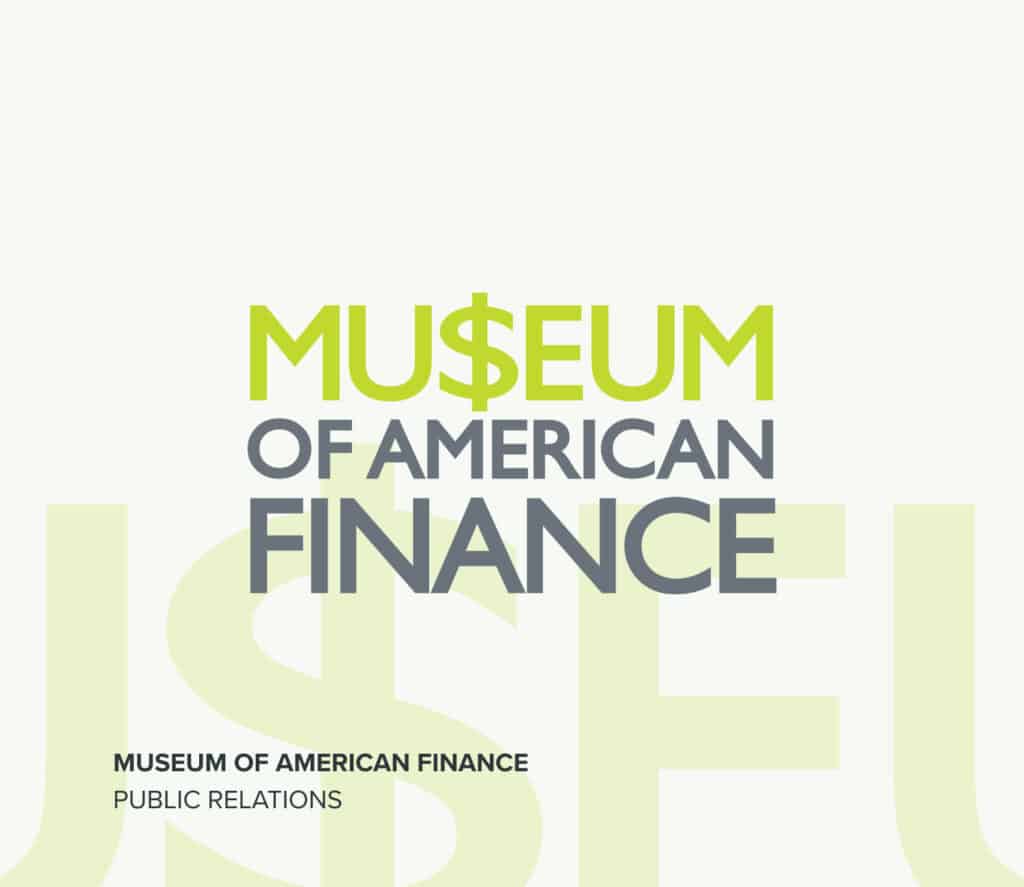Tackling the Challenges of Content Marketing in a Regulated Industry
Content marketing has taken over as one of the most effective and widely used methods for engaging with prospects and customers for financial services brands. Generally, content marketing helps create trust, establish brands as thought leaders, and demonstrate value to readers. The result of these efforts can include everything from brand recognition to lead generation and customer acquisition.
Because of this effectiveness, 45% of marketers planned to increase their budgets to increase content marketing production heading into 2024. Content marketing can be especially effective for financial services providers who position themselves as advisors and reliable resources for consumer education. While trust is lagging for financial services with U.S. consumers (just 20% reported trusting financial institutions in 2023), content that resonates achieves a 70% average engagement rate.
However, ensuring the blogs, social media posts, videos, and related content developed for these campaigns remains both creatively engaging and legally compliant is a challenge to marketers in the financial services industry. Content marketing for heavily regulated industries like banking or healthcare faces its own set of unique obstacles to developing materials that catch readers’ eyes and provide value.
Misrepresenting benefits, risks, or product details can have legal consequences while causing consumer harm, even when the best intentions are at work. Add to this the challenge that 37% of financial services companies lack the resources needed for creating content marketing, leaving room for overwhelmed teams to inadvertently introduce compliance risks if the proper systems of review are not in place.
Understanding the Limits of Content Marketing in Regulating Industries
To avoid these pitfalls and produce effective, compelling content marketing, financial services marketers need to deeply understand the limits set by industry regulations. Notably, marketing in highly regulated industries brings its own set of challenges.
A regulated industry is any that is required to follow quality, production, communication, or other legal requirements set by governing bodies. These guidelines and conditions are established to protect consumers from harm. Typically, regulated industries provide products or services that have the potential to impact physical health and safety or financial outcomes where misinformation, faulty products, or poor quality could cause consumer damages. Examples of regulated industries include financial services such as banking or insurance, healthcare and pharmaceuticals, transportation, and chemical manufacturing.
The financial services industry is subject to significant regulatory restrictions. Many of these are enforced by governing bodies including:
- SEC: The Securities and Exchange Commission is a U.S. government agency that regulates securities to protect investors and promote fair dealings and disclosures
- FINRA: The Financial Industry Regulatory Authority is a non-profit organization that oversees broker-dealers to provide investor protection.
- NCUA: The National Credit Union Association is a U.S. government agency that insures and regulates credit unions.
- CFPB: The Consumer Financial Protection Bureau is a federal agency that provides consumer protection in the financial services industry.
- GDPR: The General Data Protection Regulation is a European Union law designed to protect the disclosure, sharing, and use of personal data.
This list is just the beginning of a long lineup of agencies, legal entities, and watchdog groups enforcing fair practices on an international, national, state, regional, and local basis. With so many different requirements to satisfy, financial institutions rely heavily on their compliance departments to guide operations, develop policies, ensure training, and track changes to legal rulings.
Marketers often overlook their compliance teams as a valuable resource when developing content marketing. More traditional corporate literature such as brochures or websites outlining financial services product details may naturally come under the purview of a compliance officer. However, shorter, quicker turn-around pieces such as blogs, video shorts, or infographics can benefit from this review, too. As digital marketing for the financial services highly regulated industry becomes more prominent, frequent, and demanding, marketers may find themselves unintentionally opening their company up to risk.
Some of the common compliance risks content marketing and regulated industries face include:
- Inaccurately representing product or service inclusions, benefits, or risks
- Inappropriately excluding disclosures and legal documentation
- Incorrectly claiming protections or insurance
- Unintentionally publishing content that can lead to discrimination
- Inadvertently violating CAN-SPAM and best practices for using contact data
The Balance Between Regulatory Compliance and Creativity
Understandably, marketers are challenged when it comes to creating compelling and creative content while remaining compliant with various agencies, regulations, and requirements. The goal is to craft exciting, engaging videos, blogs, and graphics that can entice readers to act, want to learn more about a company or product, and ultimately convert into a customer.
Compliance does not have to mean the end of originality, however. Marketers should still take the time to think freely and brainstorm novel ways to communicate their brand’s differentiators and value to their target audiences. When the initial concept list is whittled down to ideas the team wants to pursue, involving compliance team members in subsequent creative sessions can be a significant help.
Digital marketing in regulated industries in particular can benefit from a collaborative effort between compliance team members and marketers. Rather than finalizing a campaign only to realize changes must be made for compliance reasons, marketers can receive input along the way from compliance leaders and legal representatives to incorporate their feedback and refine campaign materials in progress. The result can be a compelling campaign that also incorporates the required fine print and avoids any language that could be problematic.
Major banking brands have done a lot to innovate their marketing with creative, concise messaging that resonates with viewers. Here are just a few examples:
- Wells Fargo: Their Woo-Woo Monster ad campaign uses comical dogs unhappy with their current living circumstances to highlight mortgage rate and consultant opportunities for consumers who may also be looking to move house.
- Robinhood: The revitalized campaign for Robinhood Gold emphasizes how consumers can get the most out of their money with fast facts relayed over engaging graphics and video assets that underscore luxury.
- Lemonade: The insurance marketing campaign resonates with consumer empathy for those who have waited on hold for hours to receive help while using comical imagery and brand colors throughout.
Strategies for Content Marketing Success in Highly Regulated Industries
Some of the best ad campaigns are those that are visual appealing to capture attention but also highly relatable, getting consumers to nod in understanding and empathize with the presented messaging or character in a piece. From grumpy cats to NBA superstars, digital marketing in a regulated industry does not need to be boring so long as it is run through a compliance team that understands the creative side of the process.
The steps to creating marketing and communications for heavily regulated industries may vary in detail from brand to brand, but they are rather similar when it comes down to the overall process to follow for success.
Proactive Compliance Planning
Let the creativity flags fly during the brainstorming process, where nearly every idea is fair game and there are no wrong answers. Cultivating a workshop environment where everyone’s ideas are valid can help jumpstart the creative process. From there, ideas can be honed into viable campaign concepts that have a storyboard or potential plan behind them.
It’s at this stage in the process that financial services marketers should begin by involving their compliance teams. By incorporating their feedback early in the content creation process, marketers can quickly identify obstacles to campaign concepts otherwise unnoticed, narrowing down the ideas to those that are actionable and feasible from a legal perspective.
Developing Pre-Approved Content Templates
With the campaign concept established, copywriters, video editors, and graphic designers get to work on their respective asset development. This is where having standardized review templates and scheduled check-ins with compliance officers can help keep content on course.
Rather than crafting the entirety of the campaign’s materials and then submitting for a final review, incorporating feedback throughout the process through a clear review cycle, templates to collect input, and a list of required reviewers can help streamline marketing development and catch any compliance issues as they arise.
Leveraging Thought Leadership
Generally speaking, many compliance issues stem from content that makes claims regarding specific product or service performance and outcomes. One way to avoid this is to use expert-driven content. as a way to navigate regulatory constraints. This can steer campaigns away from making promises and instead help position the financial institution, and its leadership, as thought leaders that can be trusted on essential industry topics.
The Role of Educational Content
Similarly, focusing on education rather than direct selling can help mitigate compliance concerns. Often, financial services brands may catch the attention of consumers looking for general financial advice or education rather than a specific product or service. Consumers are taking to the internet for their financial education, with 30% turning to social media and 22% using resources from banks or other financial institutions.
Providing answers to common questions or helping to frame a brand as a reliable resource for educational content can further underscore brand recognition and establish trust with consumers once they are ready to decide about a financial product.
Using Data and Analytics
Content marketing goals will vary between brands, teams, and campaigns. But all marketers will likely want to measure the success of their campaigns and establish their return on investment.
To do this, marketers should establish their key performance indicators (KPIs) from the outset during the campaign brainstorming process. While some goals may be harder to track than others, such as brand recognition, identifying how success will be determined can also help shape future campaign development.
Some common content marketing goals include:
- Lead generation
- Website traffic
- Social media impressions
- Asset click through rates
- Email opens
- Customer acquisition totals
Best Practices for Financial Services Content Marketing
For financial services marketing, and content marketing for heavily regulated industries in general, marketers must work within the confines of legal language and fine print. Aside from including legal representatives and compliance team members in the review process to catch any accidental violations, marketing creatives can follow a series of best practices for marketing in highly risk averse industries.
Transparency and Disclaimers
Honesty and clarity around product or service details is a must-have for financial services marketing. Marketers (and their compliance teams) should make sure content meets legal disclosure requirements. Even if the message is short, like a social media post, disclaimers should be included or linked directly, so consumers understand exactly what is on offer, and what is not.
Avoiding Promissory Language
To write compelling copy, marketers may want to include promises or firm offers in order to entice consumers to act. However, content marketing for heavily regulated industries must be careful not to include guarantees, promissory language, or assurances. Instead, writers can use factual statements or details about products unrelated to any assertions regarding the outcomes of their use.
Navigating Social Media Restrictions
Social media may be known for attention seeking fast responses, quick witted statements, and exaggerated content, but these attributes should be avoided for digital marketing in regulated industries like financial services.
Marketers can use these platforms to advertise promotions, announce products, or collect including disclosures, and remaining unbiased apply even to the shortest of posts. Also, social media managers should be careful in how they respond directly to consumer comments on various platforms, being sure not to make promises and connecting them with the proper internal resources rather than attempting to resolve issues alone.
Collaborating with Compliance Teams
Compliance should be first and foremost during any internal review process, and being able to work with a compliance team member regularly for input on less involved content such as social media posts can go a long way to ensuring assets meet requirements. For successful marketing and communications for highly regulated industries, creating a culture of communication and collaboration can put everyone on the same team, rather than having legal facing off against creatives.
To work together effectively, marketers can implement a compliance-focused strategy that includes policies for regular review and larger campaign development as well as access to advice for ad-hoc projects.
Case Study: Barclays’ “Make Money Work For You” Campaign
British bank Barclays offers a variety of financial services including credit cards, insurance, investment banking, and consumer loans. With a wide variety of products and services to choose from, the brand needed a new way to engage with consumers and demonstrate how these offerings could potentially become part of their own money management plans.
The “Make Money Work For You” campaign featured British TV personality and host Nick Knowles discussing various money matters relatable to general consumers. The campaign was successful in not only engaging the public but also navigating regulatory constraints in several ways.
- Disclaimers: The commercials and social media content included terms and conditions language for viewers to review.
- Education: The content focused on helping consumers develop their financial literacy.
- Thought Leadership: While Knowles took the role of uninformed consumer, a Barclays Customer Care Specialist was on hand to provide insights and correct any misinformation.
- Language: The campaign encouraged consumers to learn more without promising any financial outcomes as a result of using their products or services.
- Branding: The live set for the commercial advertisements incorporated design elements underscoring the Barclays’ blue and white brand colors.
- Collaboration: The ads were also displayed across Channel 5’s social media platforms to expand distribution and reach for the bank’s target audience.
The Future of Content Marketing in Regulated Industries
The content marketing regulations of today for financial services may not be the same tomorrow. For this reason, marketers should continue working with their compliance teams to ensure that the latest changes to guidelines are accounted for during campaign development. In addition to agencies typically updating their regulations to protect consumers, several trends are emerging across financial services marketing that professional should remain current with.
- Third-party networks, influencer marketing, and other channels promoting financial services brands are increasingly under pressure to remain compliant, with the responsibility for this falling on the financial institutions.
- Using AI to aid with content ideation and generation may expedite internal processes but should not be a reason to exclude compliance teams from the review cycle, even if AI is provided with compliance requirements.
- Proactive communication with prospects and customers regarding changes to privacy policies, data management, or legal terms is crucial as data privacy laws continue to undergo updates.
- Highlighting environmental, social, and governance (ESG) topics is increasingly important for brands to appeal to younger consumers, but transparency around sustainability efforts is key.
Further on the topic of AI, the technology also promises to continue impacting how marketers engage with their jobs and with their customers. While relying on AI to craft content without regulatory input or oversight could open the door to compliance issues, marketers may find that using AI to brainstorm ideas or proofread their materials could help expedite tasks at both ends of the content development process.
Navigate Regulated Financial Services Marketing with Vested
Content marketing and regulated industries may seem at odds with one another, but marketers have a unique opportunity to express their ideas and promote their products while remaining compliant. By working closely with compliance teams and undergoing regular training, content marketers can produce creative blogs, videos, and social media posts without accidentally overstepping the boundaries set in place by regulating agencies.
Another way marketing teams can navigate stringent regulations while producing engaging, consumer-focused content is to work with Vested. We’re a trusted partner for a variety of financial services brands looking to increase their online presence while remaining compliant. Vested’s experts understand the requirements facing the highly regulated financial services industry. We help brands take their creative concepts from start to finish while incorporating the concerns and constraints set by legal teams. To learn more and get started, contact Vested today.


